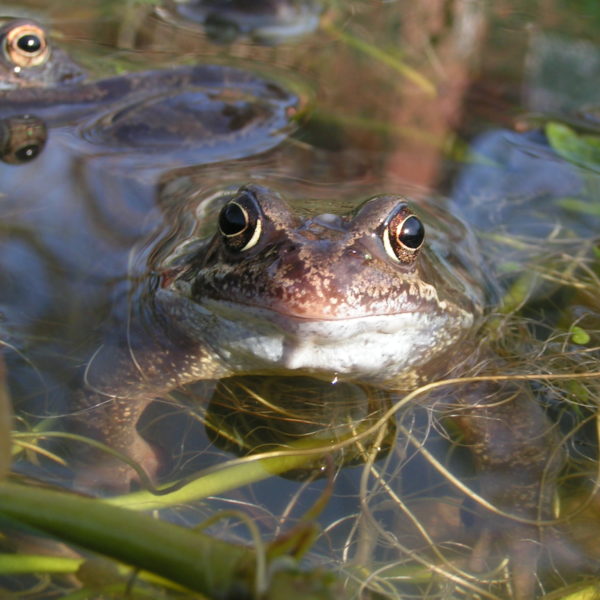Key Facts
- Length: 8cm
- Average Lifespan: 5-10 years
The Common Frog is an amphibian, coming to ponds to breed during the spring. It spends much of the rest of the year feeding on dry land, in woodland, gardens, hedgerows and tussocky grassland.
Frogs are a familiar inhabitant of garden ponds, where they lay their eggs in big clumps of spawn. They feed on a variety of invertebrates and smaller amphibians. Females are bigger than males.
How to Identify
Colour can vary enormously from green to brown and even red or yellow. Typically brown or grey with smooth skin and long back legs covered in dark bands. Hops and jumps rather than walks.
Where to find
A common and widespread species found throughout the country, except for some Scottish islands, the Isles of Scilly and the Channel Islands.
How poeple can help
Human activity, including the drainage of land for agriculture and the loss of ponds through development, has resulted in the disappearance of many wetlands. This has taken its toll on wetland wildlife like frogs The Wildlife Trusts are working closely with planners, developers and farmers to ensure our wetlands are protected. You can help: encourage frogs and other amphibians into your garden by having a wildlife-friendly pond and leaving piles of logs for hibernating beneath. In partnership with the RHS, The Wildlife Trusts’ Wild About Gardens initiative can help you plan your wildlife garden.
Did you know?
Male Common Frogs have nuptial pads on their front feet to help them grip on to females during the breeding season. The male frog will wrap itself around a female and fertilise her eggs as they are produced; a female frog may lay up to 4,500 eggs in one spring! Frogs can spawn as early as December or as late as April depending on the weather.
